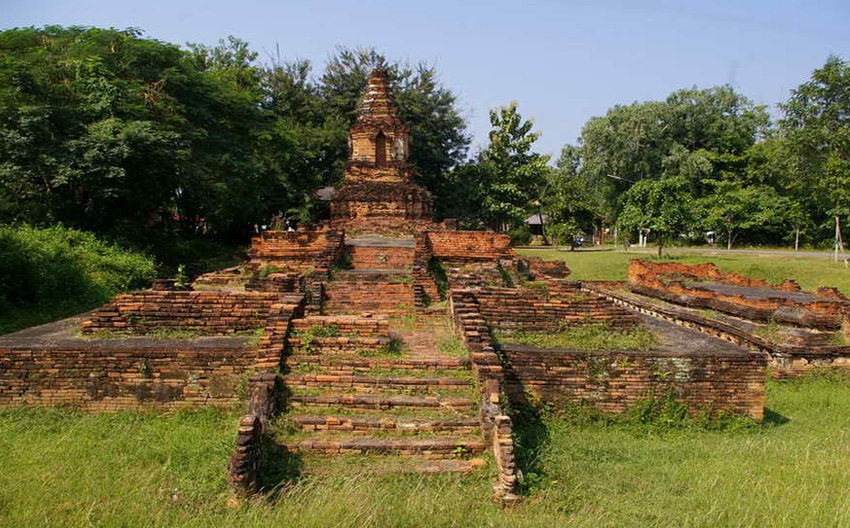-
 +855 010 333 879
+855 010 333 879 - CONTACT US

Wiang Kum Kam: Located in attractive countryside about five kilometres south of Chiang Mai along the Ping River, Wiang Kum Kam is an ancient city dating back to the eighth-century Haripunchai Kingdom. Expect to see many interesting items and structures such as stone tablets with Mon inscriptions, Buddhist sculptures and architecture, earthenware and pottery. Taking a horse-led carriage is a popular way to enjoy the ruins.
The demise of Wiang Kum Kam as the capital city is slightly different from those of other ancient capitals. Rather than being left in ruin, the city was completely submerged under the Ping River, which suddenly changed its course and swept the whole city under. Had it not been accidentally rediscovered (in 1984), the story of Wiang Kum Kum would just be a legend.
The centrepiece at Wiang Kum Kam is Wat Chedi Liam (or Temple with an Angular-based Chedi). Widely depicted in postcards, the temple features a Burmese-style pavilion (restored in 1908 by a Burmese trader) and a five-tiered chedi set on a square base – the signature style of the early Lanna period. Each corner of the chedi is guarded by an outward-facing lion, an architectural feature that is unique to the Haripunchai style (today’s Lamphun).
Other important structures include Wat Chang Kham, containing the spirit house of King Mengrai (founder of the Chiang Rai and Chiang Mai kingdoms) and the Cultural and Local Wisdom Learning Centre which exhibits Lanna objects and traditional Lanna-style houses. It’s a good idea to drop by Wiang Kum Kam Information Centre, where excavated earthenware pottery and artifacts are displayed in the exhibit rooms.